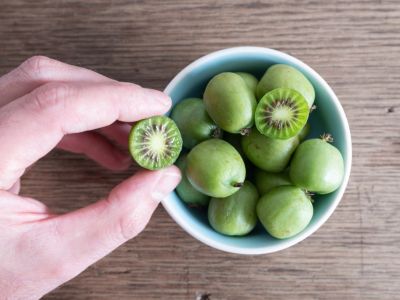Is kiwiberry related to kiwi? Indeed it is, as they are both in the same genus, Actinidia. The approximately 80 species in the genus originate in northern Asia. There are two main species of kiwiberry that are cultivated, both with widely different tastes.
Kiwiberry Information
While not widely available, kiwiberry plants can grow in USDA zones 4-8. They are the size of large grapes, and have semi-glossy, smooth skin. Just like kiwis, they have tart notes when they are firmer and get sweeter as the flesh softens. The plants grow as vines and have attractive leaves, making them perfect for trellis or arbor growth. Kiwiberries have plenty of fiber, Vitamins C and E, potassium, and magnesium. The two most commonly grown species of kiwiberry are A. arguta and A. kolomikta. Another species is fairly cold hardy, A. polygama, but its flavor is a bit on the peppery or spicy side.
How to Grow Kiwiberry
If your interest is piqued, now you need to know how to grow kiwiberry. Kiwiberry growing conditions require moist, well draining soil of average fertility. A soil pH level between 5.00 and 7.5. The plants are not self fruitful and will need another vine of the opposite sex to produce fruit. 1 male can pollinate up to 6 female vines. Plant vines 10 inches (25.4 cm) apart in holes the same depth as the nursery pot. You will need a sturdy support for the vines which should be installed before or at the time of planting. Water the vines in well and train them as they grow to the support.
Kiwiberry Care
Kiwiberries have few pest or disease issues. Train the vines up the support as they lengthen. Pruning is an important part of kiwiberry care. After the first year, in early spring, remove any non-fruiting side shoots. In order to get the vine to branch, top it to force side fruiting shoots. Apply fertilizer annually and cover the root zone with mulch to keep soil cool. Water when the soil is dry. If you live in an area with deer or rabbits, install trunk guards or fencing around the site. Berries may begin to ripen in July. Harvest them as the skin begins to dull. You can refrigerate them for up to 2 weeks.
